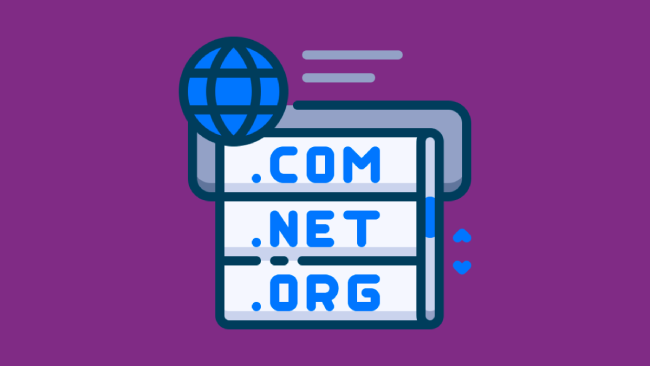Domain transfers can be a critical part of managing your online presence, but navigating through the process can be daunting, especially regarding legalities. Understanding the legal landscape is essential to ensure a smooth, compliant transfer. This guide aims to demystify the process, providing a step-by-step approach to handling legal issues in domain transfers.
Understanding the Legal Framework of Domain Transfers
The Domain Name System (DNS) is the backbone of the internet, translating user-friendly domain names into IP addresses that computers use to communicate. Understanding how DNS functions is vital to grasping the legalities surrounding domain transfers.
Legally, domain names are considered unique identifiers, often equated with online identities. However, they don’t carry the same legal status as physical property. Instead, they are more akin to a lease agreement. As a domain name registrant, you don’t own the domain outright; you have the rights to use it under specific conditions laid down by the registrar and governing bodies.
Key Legal Agreements in Domain Transfers
When you register a domain name, you agree with a registrar. This agreement outlines:
- Your rights and responsibilities as the domain holder.
- The conditions under which your domain registration can be revoked.
- Renewal and transfer policies.
It’s crucial to understand the terms of this agreement, as it forms the basis of your legal relationship with the registrar.
Role and Policies of ICANN
The Internet Corporation for Assigned Names and Numbers (ICANN) plays a pivotal role in the domain name system. As a regulatory body, ICANN develops global domain name registration policies, including transfers. Key ICANN policies impacting domain transfers include:
- The Inter-Registrar Transfer Policy (IRTP) governs the transfer of domains between registrars.
- The Expired Domain Deletion Policy outlines the process for domain expiration and deletion.
Staying updated with ICANN’s policies ensures compliance during the transfer process.
Transfer Agreements and Terms of Service
When transferring a domain, you’ll encounter a transfer agreement, often governed by the gaining registrar’s terms of service. These documents are crucial as they detail:
- Transfer fees and process.
- Obligations of the transferring and receiving registrars.
- Conditions under which a transfer can be rejected.
It’s important to review these agreements carefully to understand the transfer’s terms and any potential legal implications.
This initial part of our guide has set the stage for understanding the legal framework surrounding domain transfers. As we progress, we’ll delve deeper into the specifics of intellectual property rights, privacy considerations, and best practices to ensure your domain transfer is smooth and legally compliant.
Intellectual Property Rights and Domain Names
Intellectual property rights play a significant role in domain transfers, especially regarding trademarks. Understanding these rights is crucial to avoid legal complications.
Trademark Issues in Domain Names
Trademarks are symbols, words, or phrases legally registered or established through use to represent a company or product. In domain names, trademarks become crucial when a domain name is similar or identical to a registered trademark, potentially leading to legal issues.
Trademark Infringement Risks in Domain Transfers
When transferring domain names, the risk of trademark infringement becomes a significant concern and can occur if:
- The domain name is identical or confusingly similar to a trademark.
- The domain name holder has no legitimate interest in the domain name.
- The domain is being used in bad faith or to deceive consumers.
To mitigate these risks, conducting thorough research is essential to ensure that the domain name does not infringe on existing trademarks.
Dispute Resolution Policies
Various policies have been implemented to resolve domain names and trademark disputes.
Uniform Domain-Name Dispute-Resolution Policy (UDRP)
The UDRP is a policy established by ICANN for resolving disputes regarding the registration of domain names. This policy is primarily used in cases of alleged abusive registration, typically known as “cybersquatting.” Under UDRP, the complainant must establish three elements:
- The domain name is identical or confusingly similar to a trademark in which the complainant has rights.
- The domain name holder has no rights or legitimate interests in respect of the domain name.
- The domain name has been registered and is being used in bad faith.
The UDRP process is quicker and less expensive than traditional legal proceedings, making it a preferred method for resolving domain name disputes.
Uniform Rapid Suspension System (URS)
The URS is a newer and faster dispute resolution process designed for clear-cut cases of trademark abuse. It’s a cost-effective way to address the most egregious cases of infringement. Under URS:
- A complainant can seek the suspension of a domain name.
- The burden of proof is similar to UDRP, but the standard is higher, requiring clear and convincing evidence of each element.
- If successful, the domain name is suspended for the remainder of the registration period but not transferred.
Understanding these dispute resolution policies is essential for anyone involved in the domain transfer process, as it helps navigate potential legal challenges effectively.
Privacy and Security Considerations
When transferring a domain, it’s essential to consider privacy and security. These factors are crucial in protecting the interests of all parties involved and ensuring a secure transfer process.
WHOIS Privacy and Legal Implications
The WHOIS database plays a critical role in domain transfers. It provides necessary information about the domain registrant, aiding in the transparency and legitimacy of the transfer process. However, this public availability of registrant details can lead to privacy concerns. Personal information listed on WHOIS can be susceptible to:
- Spam and unsolicited communication.
- Potential misuse or identity theft.
- Challenges in adhering to privacy regulations like GDPR.
Many registrars offer WHOIS privacy services to combat these issues, masking personal information while complying with legal requirements.
Cybersecurity and Domain Hijacking
The transfer of domains is not immune to cybersecurity threats. One of the most significant risks during this process is domain hijacking, where a domain is illegally transferred or altered without the owner’s consent. Hijacking can happen for various reasons, including phishing attacks or unauthorized access to email accounts associated with the domain. To protect against such threats:
- Ensure strong authentication methods are in place during the transfer.
- Regularly update and secure all associated email accounts.
- Monitor the domain’s status and registrant details pre- and post-transfer.
In cases of domain hijacking, legal actions can be taken based on the nature of the infringement. Such actions may involve initiating dispute resolution policies like UDRP or legal proceedings in relevant jurisdictions. Therefore, maintaining robust security measures and being aware of legal remedies is imperative in safeguarding your domain during transfers.
Navigating Legal Challenges in International Domain Transfers
International domain transfers involve navigating a complex web of legal challenges. This section sheds light on handling the intricacies of different jurisdictions and complying with diverse international laws and regulations.
Understanding Different Jurisdictions
Challenges in International Domain Transfers
Transferring a domain name across borders often means grappling with the laws of multiple countries. These challenges vary widely, from differences in domain registration and transfer policies to diverse intellectual property rights protections and local data privacy laws. A clear understanding of the legal frameworks in originating and receiving countries is essential.
Dealing with Multiple Legal Systems
The key to managing an international domain transfer effectively is to ensure compliance with the legal requirements of the sender and receiver jurisdictions. This often requires careful legal navigation and, in complex cases, the assistance of legal professionals experienced in international domain law.
Compliance with International Laws and Regulations
GDPR and Domain Transfers
The European Union’s General Data Protection Regulation (GDPR) is a significant regulatory framework impacting domain transfers. GDPR affects domain transfers by:
- Limiting the public display of registrant information in WHOIS databases.
- Setting stringent data protection and consent requirements.
- Influencing the verification processes of registrant identities is a critical step in domain transfers.
Adhering to GDPR’s stipulations is crucial for any transfer involving EU citizens or entities.
Other International Laws Affecting Domain Transfers
In addition to GDPR, other international laws and agreements also play a role in domain transfers. It includes legislation like the Anti-Cybersquatting Consumer Protection Act (ACPA) in the United States and the Electronic Commerce Directive in the European Union, as well as international treaties such as the Paris Convention for the Protection of Industrial Property. These regulations introduce additional layers of complexity, necessitating a thorough and informed approach to international domain transfers.
Best Practices for Legal Compliance in Domain Transfers
Ensuring legal compliance in domain transfers is crucial for a smooth transition. This final section highlights the best practices, focusing on the importance of due diligence and the role of legal advice in complex transfer scenarios.
Conducting Due Diligence
Due diligence is a critical step in the domain transfer process, serving as a means to:
- Identify potential legal issues before they become problematic.
- Ensure that the domain does not infringe on intellectual property rights.
- Verify the domain’s compliance with relevant laws and policies.
Steps for Effective Due Diligence
Effective due diligence involves several key steps:
- Researching the history of the domain, including previous ownership and usage.
- Checking for any existing legal disputes or claims against the domain.
- Reviewing the domain’s compliance with privacy laws, especially if it involves international transfers.
- Assessing the domain’s adherence to relevant governing bodies like ICANN policies.
These steps help mitigate risks and ensure a legally compliant transfer process.
Seeking Legal Advice
Legal consultation becomes essential in specific scenarios during domain transfers:
- When dealing with high-value domains.
- If the domain transfer involves multiple jurisdictions.
- In cases of complex legal disputes or uncertainties.
Seeking advice from legal professionals specialized in domain law can provide clarity and guidance in these situations.
Role of Legal Advice in Complex Transfers
Legal advisors play a pivotal role in complex domain transfers. They offer expertise in:
- Navigating the intricacies of domain transfer laws and regulations.
- Providing strategic advice on compliance and risk management.
- Assisting in dispute resolution and negotiation processes.
Their guidance can be invaluable in ensuring that domain transfers are not only compliant but also strategically sound.
Conclusion
Navigating the legal landscape of domain transfers can be challenging, but with the right approach, it is manageable. Understanding the legal framework, respecting intellectual property rights, prioritizing privacy and security, and adhering to international laws are key to successful domain transfers. Conducting thorough due diligence and seeking legal advice when necessary are best practices that cannot be overlooked. By following these guidelines, one can ensure a smooth and legally compliant domain transfer process.



Leave a comment
Have something to say about this article? Add your comment and start the discussion.